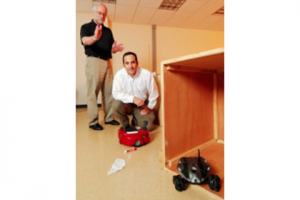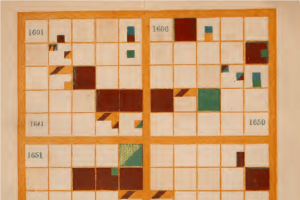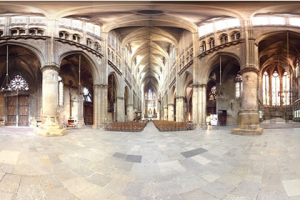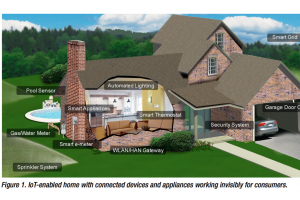|
Our project aims to explore how to create immersive interactions, motivate interactors to engage and enhance interactor's experience in VR narrative with incentives and rewarding system design, possibly using full-body tracking technology. The narrative of our project starts inside a coffin where the interactor will hear MJ's thriller. Moving outside the coffin, he will find MJ zombie dancing with other zombies on the stage for a huge zombie audience. Then MJ zombie will invite him to dance along with the music. When he gets the correct move, audience applaud. We would like to design incent |
Since its earliest days, harassment and abuse have plagued the Internet. Recent research has focused on in-domain methods to detect abusive content and faces several challenges, most notably the need to obtain large training corpora. In this paper, we introduce a novel computational approach to address this problem called Bag of Communities (BoC)‚ technique that leverages large-scale, preexisting data from other Internet communities. We then apply BoC toward identifying abusive behavior within a major Internet community. |
Deception is a common behavior not only in humans but also in animals. We focus on deceptive behavior in robotics because the appropriate use of deception is beneficial in several domains ranging from the military to a more everyday context. In this project, we proposed a taxonomy of robot deception and developed novel algorithms for robots' deceptive behaviors inspired by biological findings. In more recent work, we are developing computational models and conducting human-subject studies for a robot's other-oriented deception in the context of Human-Robot Interactions (HRI).  |
The Board Game is a room-scale interactive narrative designed specifically for the Hololens. In this narrative, the player is helping a couple of kids (non-playable characters) to escape a life-threatening board game. The game begins with the kids casting the dice and the game shrinking them to a small size after which they become actual characters in the game. The player will guide the kids through 5 separate puzzles that explore different interactions and designs to the end of the game which resets the world and returns everything back to the normal.  |
|
This project explores the effects that diverse virtual reality experiences may have on the self efficacy of middle and high school black girls. Website: |
The communication delay inherent in deep space travel will make relying on ground-based mission control to manage the daily lives of astronauts difficult. To mediate this impact, this work focuses on the design of a mixed-initiative plan (MIP) management system to provide crews with greater autonomy in adapting plans to reflect the current state of the mission. Specifically, this presentation will detail the creation of the user interface from requirements derivation through preliminary design. |
Reimagining a lost nineteenth-century haptic visualization scheme  |
The Grand Palace is a Chinese history simulation game exploring an educational strategy of representing a complex political system in a specific historical period. In this game, interactors play as an emperor in the imperial age of China, who needs to seek supporters in the court to prepare for war. The simulation represents the bureaucratic structure of the imperial court and the political threats an emperor might face. The goal is to educate the interactors about the strategies an emperor can use to maintain his power. |
|
With nearly four billion people still lacking access to the internet, efforts to expand internet access are growing rapidly across the world. Cuba remains one of few emerging nations where this access is still affected by historical trade embargoes and restrictions. Since the 2014 announcement of the normalization of relations between Cuba and the U.S., however, internet access in Cuba is increasing. This work is situated during this time of transition to explore the impacts of increasing internet access on individuals and communities living in Havana.  |
Family and friends connect and bond through food, during mealtimes or just by simply sharing a photo of their meal. This strengthens the bond between people. However, modern life has required us to travel for work, for education, or to temporarily relocate, causing us to be apart from loved ones. As a result, this has made it hard to maintain in-person mealtimes. This project focuses on exploring ways that people can connect to loved ones when they are apart through food. |
While previous work has addressed the direct effects of misinformation, we propose to study the phenomenon of misinformation about misinformation, or politicians ``crying wolf'' over fake news. We argue that strategic and false allegations that stories are fake news or deepfakes benefit politicians by helping them maintain support in the face of information damaging to their reputation. We posit that this concept, known as the ``liar's dividend'', works through two theoretical channels: by injecting informational uncertainty into the media environment, or by providing rhetorical cover.  Website: |
In collections of scientific and cultural history that are too big to see, metadata act as virtual handles for rare and delicate artifacts from the past. At the Arnold Arboretum, a collection of long-lived trees, vines, and shrubs managed by Harvard University, landscapes from around the world and across time are stitched together by metadata. However, metadata are worthy of study themselves. Created in varied social and technological eras, they register the organizational structures and values of their time. |
|
The Light Orchard is an interactive installation that invites people to walk into a grove of futuristic trees, lit with color. The trees are aware of the presence of people in their space, and can respond in many different ways. User can play different games, watch animations, and work together with different simulations, that allow them to easily collaborate, learn, and play together. Website: |
The Augmented Reality experience, The Lights of St. Etienne, uses the AR-browser Argon as a platform for an embodied, location-based experience in St Etienne Cathedral in Metz. The experience takes into account the cultural heritage and ‚"hidden" stories embedded in its architecture, windows, and ornamentations. Lights focuses on five separate sites (geo-spots) in and around the cathedral to explore various dimensions of the cathedral, its history, and its place in Metz.  |
Usually, objects are considered to be discrete instantiations of something unique and unitary, comprising one individual thing and not another. Some technological developments are making that assumption murkier. Ubiquitous computing and mobile devices have begun to shift how objects operate. As examples, clothing is being instrumented with computational capabilities, creating the fields of "wearables". Networked appliances in the home become members of the Internet of Things.  |


